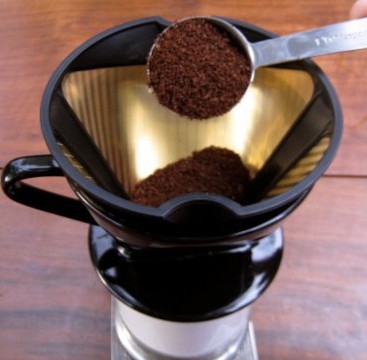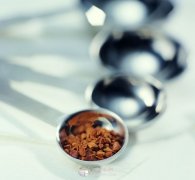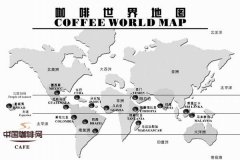Brewing coffee: the ratio of coffee to water

(source: google)
Standard brewing ratio (Standard Brewing Ratio)
Coffee cup count
The amount of coffee used COFFEE TO BE USED
Water consumption WATER TO BE USED
Cups of Coffee
By weight
Meter by measuring tool
BY WEIGHT
BY MEASURE
Ounce Ounces
Gram Grams
Teaspoon Tea
Spoon Table
Cup Cups
Coffee liquid (oz)
Number of cups Cups
Pint Pints
Quart Quarts
One GAL, two gallons, two gallons.
Ml CCs (milliliters)
L Liters
Spoons
Spoons
Fluid
Ounces
1
0.38
11
6
2
January 8th
8
1
January second
January fourth
January 8th
237
0.2
2
0.75
21
12
4
January fourth
16
2
1
January second
January fourth
473
0.5
3
1.13
32
18
6
March 8th
24
3
1 1/2
March fourth
March 8th
710
0.7
4
1.5
43
24
8
January second
32
4
2
1
January second
947
1
5
1.88
53
30
10
May 8th
40
5
2 1/2
1 1/4
May 8th
1183
1.2
6
2.25
64
36
12
March fourth
48
6
3
1 1/2
March fourth
1420
1.4
7
2.63
74
42
14
July 8th
56
7
3 1/2
1 3/4
July 8th
1656
1.7
8
3
85
forty-eight
sixteen
one
sixty-four
8
4
two
one
1893
1.9
9
3.38
ninety-six
fifty-four
eighteen
1 1/8
72
9
4 1/2
2 1/4
1 1/8
2130
2.1
10
3.75
one hundred and six
sixty
twenty
1 1/4
80
ten
five
2 1/2
1 1/4
2366
2.4
eleven
4.13
one hundred and seventeen
sixty-six
22
1 3/8
eighty-eight
eleven
5 1/2
2 3/4
1 3/8
2603
2.6
twelve
4.5
one hundred and twenty eight
72
24
1 1/2
ninety-six
twelve
six
3
1 1/2
2840
2.8
If you know the amount of coffee powder, multiplied by the coefficient 21.33, you know how many ounces of water you need (0.046875 is the inverse coefficient), multiplied by the coefficient 22.2593, you get how many milliliters of water you need (0.04493 is the inverse coefficient).
For example, if you have 1.2oz coffee powder, multiply it by 21.33g, you will need 25.6oz water; 92.6g coffee powder will need 2061CCs water. The amount of coffee powder required can be obtained by multiplying the inverse coefficient with the known amount of water.
The brewing ratio of enthusiasts Connoisseur's Brewing Ratio
Cups of Coffee
The amount of coffee used COFFEE TO BE USED
Water consumption WATER TO BE USED
BY WEIGHT
BY MEASURE
Ounces
Grams
Tea
Table
Cups
Fluid
Cups
Pints
Quarts
1/2 Gal
CCs
Liters
Spoons
Spoons
Ounces
(milliliters)
1
0.38
10.6
six
two
January 8th
6
March fourth
March 8th
March sixteenth
3/32
177
0.18
two
0.75
21.3
twelve
4
January fourth
twelve
1 1/2
March fourth
March 8th
March sixteenth
355
0.35
three
1.13
31.9
18
6
March 8th
eighteen
2 1/4
1 1/8
September sixteenth
9/32
five hundred and thirty two
0.53
four
1.5
42.5
24
eight
January second
twenty-four
three
1 1/2
March fourth
March 8th
seven hundred and ten
0.71
five
1.88
53.2
thirty
ten
May 8th
thirty
3 3/4
1 7/8
15/16
15/32
eight hundred and eighty seven
0.89
6
2.25
63.8
thirty-six
twelve
March fourth
36
4 1/2
2 1/4
1 1/8
September sixteenth
1065
1.06
7
2.63
74.4
forty-two
fourteen
July 8th
42
5 1/4
2 5/8
1 5/16
21/32
1242
1.24
eight
three
85.1
forty-eight
16
1
forty-eight
six
three
1 1/2
March fourth
1420
1.42
nine
3.38
95.7
54
18
1 1/8
fifty-four
6 3/4
3 3/8
1 11/16
27/32
1597
1.6
ten
3.75
106
60
twenty
1 1/4
sixty
7 1/2
3 3/4
1 7/8
15/16
1775
1.77
eleven
4.13
117
sixty-six
twenty-two
1 3/8
sixty-six
8 1/4
4 1/8
2 1/16
1 1/32
1952
1.95
twelve
4.5
one hundred and twenty eight
seventy-two
twenty-four
1 1/2
seventy-two
nine
4 1/2
2 1/4
1 1/8
2130
2.13
If you know the amount of coffee powder, times the coefficient 16, you know how many ounces of water you need (0.0625 is the inverse coefficient), multiplied by the coefficient 16.6945, you get how many milliliters of water you need (0.04493 is the inverse coefficient).
For example, if you have 1.2oz coffee powder multiplied by 16.0, you need 19.2oz water; 92.6g coffee powder requires 1562CCs (1.56L) water. The amount of coffee powder required can be obtained by multiplying the inverse coefficient with the known amount of water.
Comparing the two tables, it is not difficult to find that the so-called brewing of enthusiasts is just a little higher in concentration and heavier in taste. Simple and simple words: one serving of powder, about 16 parts of water.
The picture below is the coffee brewing rate chart of SCAA, which looks a little confused.

(Source: scaa.org)
Source: Blackbearcoffee Compiled by: Huang Wei (Sina Huang Wei Boutique Coffee)
China Coffee Trading Network: www.gafei.com
Important Notice :
前街咖啡 FrontStreet Coffee has moved to new addredd:
FrontStreet Coffee Address: 315,Donghua East Road,GuangZhou
Tel:020 38364473
- Prev

Coffee roasting is a challenge for coffee roasters
The entrance of coffee has five flavors: fragrant, sour, bitter, sweet and mellow. In the magical world of bakers, coffee is life.
- Next

Growing conditions of coffee
Coffee can not be grown in any environment, because it is originally a plant growing in a tropical rain forest. In systematic development, coffee forms the habit of calm wind, cool, shaded or semi-shaded and humid environment.
Related
- What is the meaning of lactic acid fermentation with coffee bean treatment?
- How to judge the state of foam by sound?
- How does the latte pull out the unicorn pattern? Come to get for a little trick to improve the flower pull!
- Will flower pulling affect the taste of the latte?
- Do you know the history of coffee?
- The difference between honey treatment and sun washing what is raisin honey treatment?
- What kind of milk can a novice use to make coffee foam to keep the foam longer? The correct method and skills of milking tutorial sharing
- Why do washed coffee beans taste sour? Flavor characteristics of washed Coffee
- Introduction to the skill of how to practice the size and height of water injection around the circle of hand-brewed coffee
- How do beginners practice coffee flower drawing from scratch?

